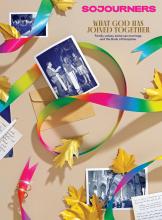SOMETIMES I WONDER if my “Black card” is in jeopardy. The main source of this concern is that my encounters with the Black church are few, the most consistent being the yearly family viewing of the 1996 film The Preacher’s Wife, though even I know the brevity of that movie’s scripted sermons is far from accurate. My few in-person Black church experiences taught me the basics: Wear your Sunday best, and expect the service to be long. But beyond that, the Black church has always been a bit of a mystery to me, a place that has never felt familiar.
Yolanda Pierce’s In My Grandmother’s House provides an intimate entry into this world. From tarry nights and foot washing to patriarchal structures, Pierce details her experiences and invites the reader into the tension of celebrating the beautiful aspects of the Brooklyn Holiness-Pentecostal church of her youth while also laying bare the ways in which that church, and the Black church at large, has failed to be the loving and inclusive body it professes to be.
In the preface, Pierce describes her book as “a work of Grandmother theology,” a womanist theology that draws on the generational wisdom of older Black women and provides a different way to know God. With the childhood stories she tells, Pierce seems to identify her grandmother Vivian—the woman who raised her, served faithfully in the church, and whose home displayed a portrait of a Black Jesus—as the primary theologian in her life. In a culture that so often elevates the thoughts and analysis of white, male theologians, to read and reflect upon the lessons that Pierce learned from her grandmother and her church mothers makes an impact, lessons that continue to inform how she lives today.
Read the Full Article

